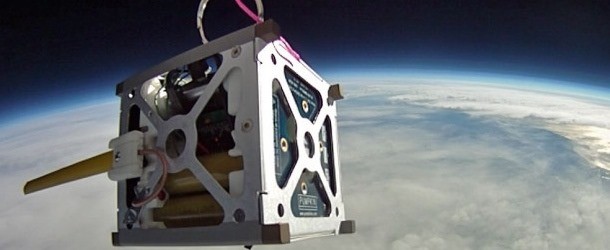Entangled Photons in CubeSat A Cost Advantage for Quantum Communication Nodes

(OSA.org) Alexander Ling of the National University of Singapore and his team are working to pack quantum technology into CubeSats.
CubeSats are tiny satellites built of modular cubes 10 cm on a side. The CubeSat hosting the experiment from Ling’s group, dubbed SpooQy-1, is a three-unit (3U) construction, roughly 30 cm long, with the quantum experiment occupying the right-hand two-thirds of the spacecraft.
The solar-powered SpooQy-1 weighs in at a mere 2.6 kg—compared with masses of anywhere from 50 to 600 kg for conventional satellites used in space-based communications experiments. The low mass could give CubeSats a big cost advantage for hosting quantum communication nodes, according to Ling. That’s because any realistic use case would require an entire constellation of satellites for covering more than a small area of Earth’s surface at a time.
Ling notes that, for real applications, the nanosatellites may need to “grow slightly larger” to accommodate the telescope and pointing system needed for free-space communications—whether from satellite to ground for basic quantum key distribution, or between satellites in more advanced quantum internet schemes (which may also require putting some form of quantum memory on the spacecraft). The team hopes to launch a telescope-equipped test CubeSat in the next few years.



















